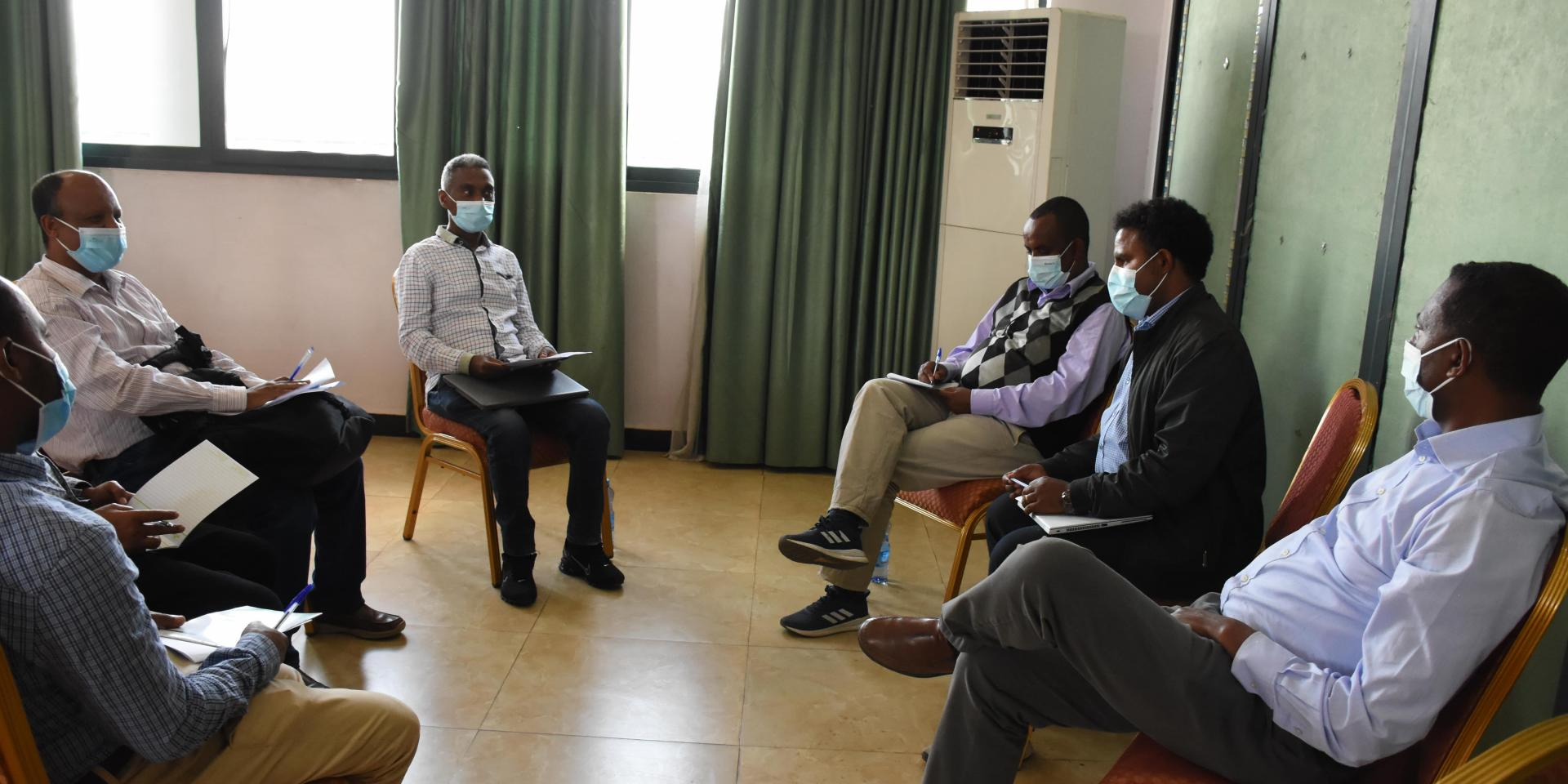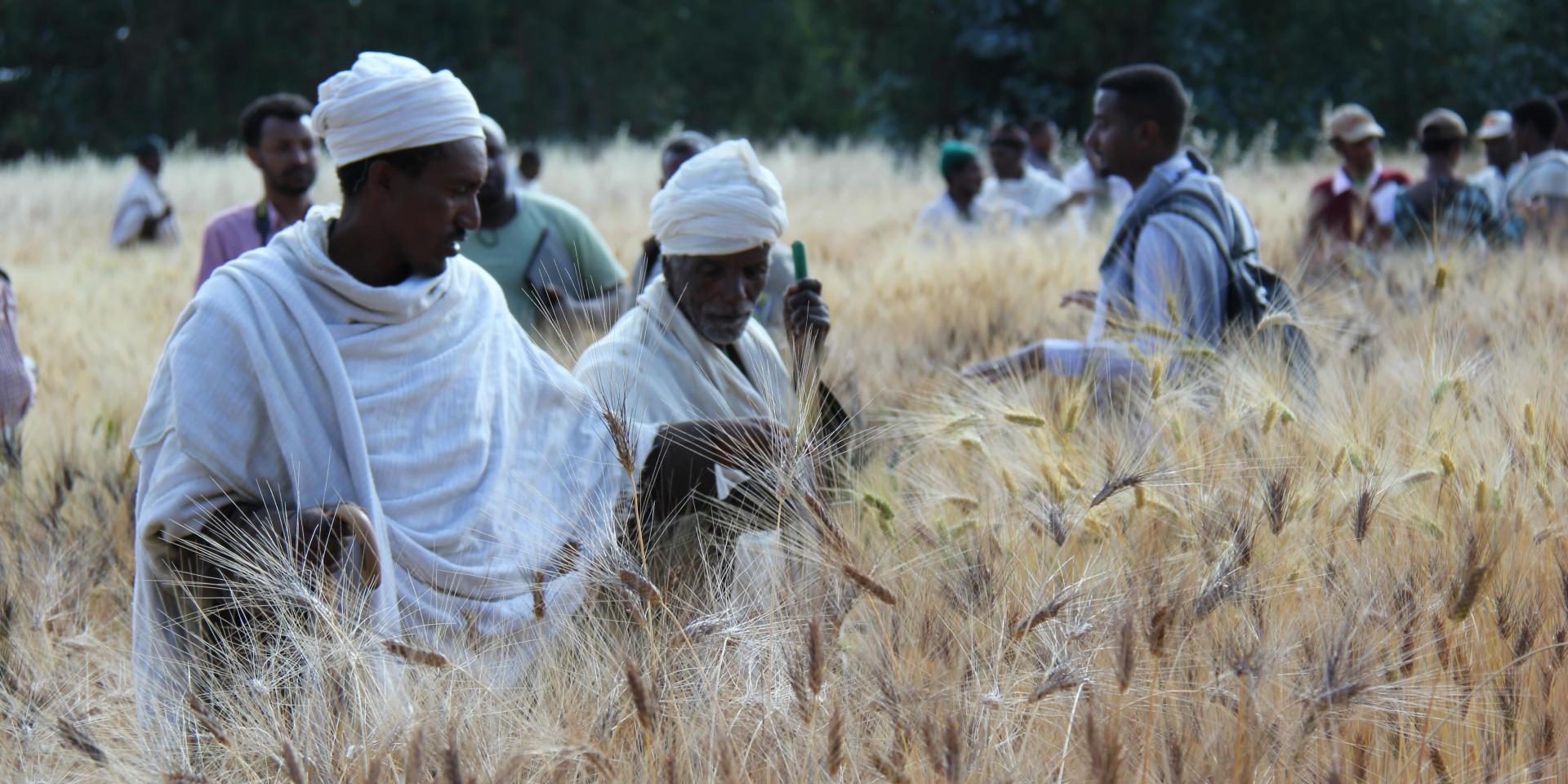
In some of Ethiopia’s most vulnerable communities, climate change is having a disastrous effect on agriculture, a critical sector to the livelihood of millions. Droughts, floods, pests, and disease outbreaks are key challenges farmers face in the age of the climate crisis. These climate-related threats have already contributed to reducing agricultural productivity and food insecurity.
In order to minimize agricultural risks from the above challenges and maximize farmers’ resilience, there is a critical need to introduce the technologies, innovations, and practices that underpin ‘climate-smart agriculture. For instance, cascading knowledge on agricultural risk management and promoting conservation agriculture may prove to be sustainable practices that address the limiting factors of food security. This, however, cannot be done in a ‘one-size-fits-all’ approach. In Ethiopia, we’ve seen how climate-smart agriculture (CSA) not only needs to be localized – so it is effective in different environments – it also needs to be inclusive, meeting the needs of women and youth in various communities.
CSA is critical to making Ethiopian farmers and their communities more resilient in the face of climate change. Awareness-raising campaigns and consultations fit an important role in engaging scientists, practitioners, and beneficiaries to understand and implement area-specific climate adaptation mechanisms through CSA-based input. A current challenge is that climate-smart interventions in Ethiopia are limited because of a lack of awareness of the necessary skill set to implement and manage those technologies properly. After all, it is wise to remember that CSA is a knowledge-intensive exercise. For instance, let us look at the Ethiopian highlands, which constitute a substantial amount of the country’s farming population. In the extreme highlands of Ethiopia – generally dubbed as Wurch or mountain zone above 3800m elevation above sea level – CSA implementation is even scarce due to climatic and socio-economic conditions. In fact, those parts of the highlands are often referred to as the “forgotten agroecology” and agricultural research institutions – both in Ethiopia and beyond – must develop and package climate-smart interventions tailored for regions that have these agroecological characteristics.
Despite some practical challenges, it is also wise to note that there are successful cases of CSA implementation and addition across the various parts of the country. This is recognized for the literature review to document CSA experiences in the country and develop a detailed ‘CSA compendium’. These experiences can promote public engagement informed and inspired by the practical experience of climate-smart interventions, both from sites that have similar agroecological characteristics – as well as different – so that farmers and communities can learn from the successes and failures of other ventures. This public engagement should be underpinned by business and financing models that work for resource-poor farmers, so they can access or invest in making their agriculture more climate-smart.
Knowing what works where will be essential to develop strategies that can facilitate targeting and scaling CSA approaches. Developing a CSA compendium, a collection of concise but detailed information on CSA practices can be an entry point to achieve this – which also requires efforts from various experts and collaboration among institutions in the country and beyond.
In line with this understanding, a recent workshop in Ethiopia brought together researchers from the Ethiopia Institute of Agricultural Research (EIAR) and the Ministry of Agriculture, the Regional Bureau of Agriculture, alongside partners from regional agricultural research institutes, Universities, and CGIAR centers.
It aimed to raise awareness among partners on the kinds of climate-smart packages of agricultural technologies and practices that are socially inclusive and responsive to the needs of young people while also being feasible from a socio-economic standpoint and ready to be expanded and delivered on a bigger scale. Key presentations were made about what CSA is and what it is not. In addition, the type and description of indicators used to identify CSA practices that are economically feasible, socially acceptable, and gender-responsive were discussed in-depth. As part of this exercise, experts identified more than 20 potential climate-smart agriculture interventions tested, validated, and implemented effectively in different parts of the country.
Some of the key presentations and discussions at the workshop revealed critical lessons for implementing CSA:
- Climate-smart agriculture is not a set of practices that can be universally applied but rather an approach that involves different elements embedded in local contexts.
- Climate-smart agriculture relates to actions both on farms and beyond the farm, incorporating technologies, policies, institutions, and investment.”
- Climate-smart agriculture is also a continuous process, though we should focus on the big picture and avoid trivial debates about whether CSA is a practice, technology, or an option.
- Due consideration should be given to gender sensitiveness and social inclusiveness as a criterion in identifying compelling innovations.
- Better indicators should be developed in measuring how climate-smart agriculture is adopted.
The workshop was the first of a series planned to raise awareness of different approaches to climate-smart agriculture while aligning Ethiopian institutions behind common understandings of how climate-smart agriculture can be delivered at both a local and national level.
In closing this first workshop, Ermias Abate, Deputy Director-General of the Amhara Region Agricultural Research Institute, stated, “Agriculture wouldn’t move an inch forward if we continued with business as usual and hence the need to be smart to face the new realities of agriculture under climate change.”
The Accelerating Impacts of CGIAR Climate Research in Africa (AICCRA) workshop was held between December 24 and 25, 2021, in Bahir Dar, Ethiopia, and was organized jointly by:
- The Alliance of Bioversity International and the International Center for Tropical Agriculture (CIAT)
- CGIAR Program on Climate Change Agriculture and Food Security (CCAFS)
- International Maize and Wheat Improvement Center (CIMMYT)
- International Center for Agricultural Research in the Dry Areas (ICARDA) and
- International Livestock Research Institute (ILRI)

 Innovations
Innovations 